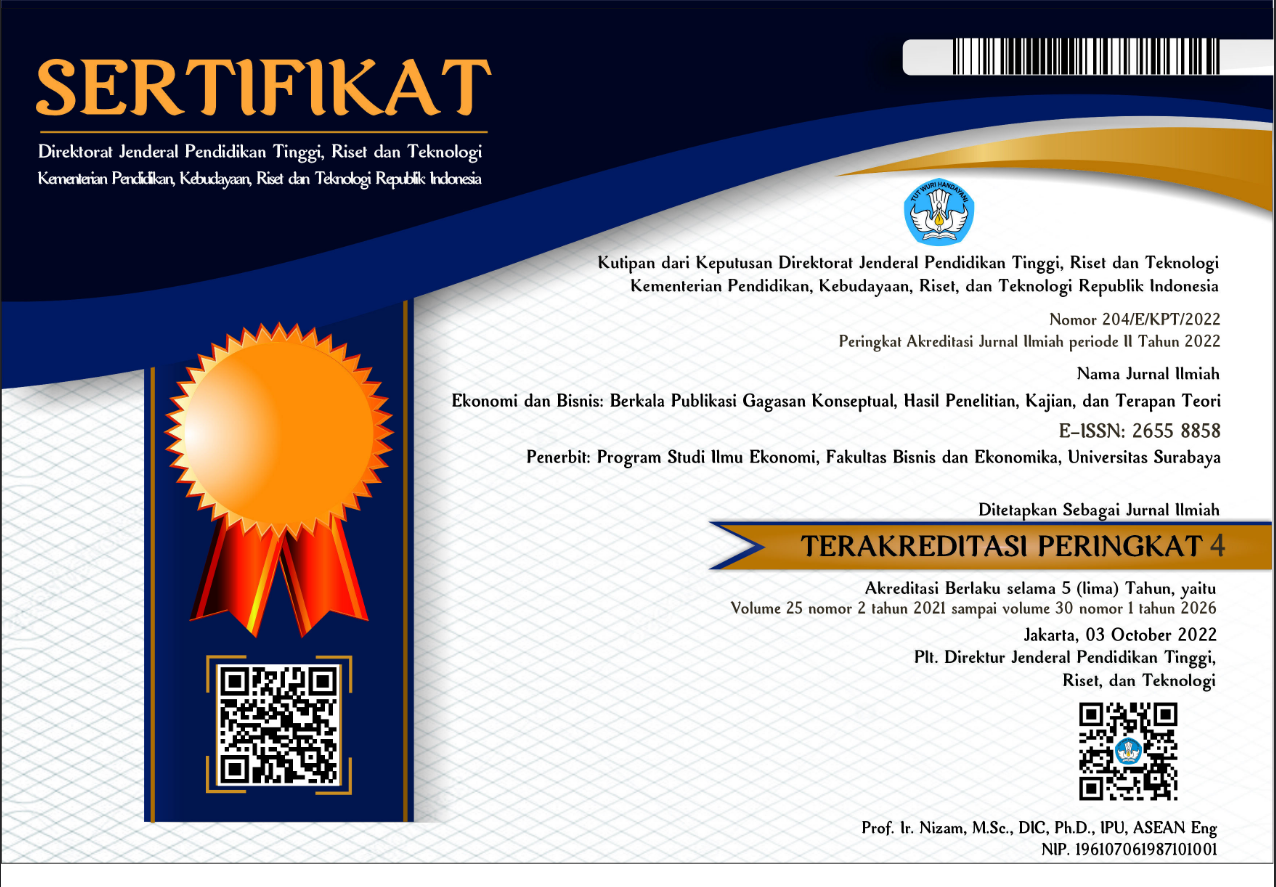MEMBANGUN DIGITAL CUSTOMER EXPERIENCE PADA GENERASI MILENIAL
 Abstract Views:
735 times
Abstract Views:
735 times
 PDF (Bahasa Indonesia) Downloads:
485 times
PDF (Bahasa Indonesia) Downloads:
485 times
Abstract
The theory of consumer experience has long been invented by schoolars, even starting in the 1990s. The disclosure of this theory began in the 1990s in a traditional and conventional business context. Businesses are still faced with purchases and consumers on the sidelines, face-to-face meetings, and direct interaction, and the consumer can still see and try the product in person. The development of business in the Internet era has brought about a variety of technologies and digital media, one of which is the online store. The conditions of online business are very different from those of conventional and traditional business. Consumers cannot interact directly and face-to-face; they cannot see and try the product directly. Then, what about the purchasing experience experienced and felt by today's consumers? This research looks at every element of the customer experience at every stage of consumer purchasing decisions. Research is qualitative research with the method of group discussion focused on questions that have been structured. The study involved 10 sources selected according to certain criteria, one of which was the age range of the millennial generation. The findings reveal new elements in consumer experience in the digital age by referring to consumer experiences presented in the 1990s.
Downloads
References
Arum Mindarti, N., Siti Sundari, M., & Hariadi, S. (2021). Bisnis Online: Preferensi Konsumen Terhadap Layanan Online Food Delivery. Jurnal Ekonomi Dan Bisnis, 24(2 SE-Articles), 33–40. https://doi.org/10.24123/jeb.v24i2.4743
Bolton, R. N., McColl-Kennedy, J. R., Cheung, L., Gallan, A., Orsingher, C., Witell, L., & Zaki, M. (2018). Customer Experience Challenges: Bringing Together Digital, Physical and Social Realms. Journal of Service Management, 29(5), 776–808. https://doi.org/10.1108/JOSM-04-2018-0113
Bougie, R., & Sekaran, U. (2019). Research Methods For Business: A Skill Building Approach (8th ed.). Wiley.
Creswell, J. W., & Creswell, J. D. (2022). Research Design: Qualitative, Quantitative, and Mixed Methods Approaches (6th ed.). Los Angeles: SAGE Publications.
Edelman, D. C., & Singer, M. (2015). Competing on customer journeys. Harvard Business Review.
Kasali, R. (2017). Disruption. Jakarta: PT. Gramedia Pustaka Utama.
Lemon, K. N., & Verhoef, P. C. (2016). Understanding Customer Experience Throughout the Customer Journey. Journal of Marketing, 80(6), 69–96. https://doi.org/10.1509/jm.15.0420
Malhotra, N. K. (2020). Marketing Research: An Applied Orientation (7th ed.). Pearson.
Rahmawati, V., & Mettan, S. V. (2023). Pengaruh Perceived Desired, Viability, dan Behavior Control Terhadap Entrepreneurial Intention Pada Mahasiswa di Surabaya. Jurnal Ekonomi Dan Bisnis, 27(1 SE-Articles), 34–51. https://doi.org/10.24123/jeb.v27i1.5690
Schindler, P. (2022). Business Research Methods (14th ed.). McGraw Hill.
Schmitt, B. (1999). Experiential Marketing. Journal of Marketing Management, 15, 53–67.
Sugiyono. (2018). Metode Penelitian Bisnis, Pendekatan Kuantitatif, Kualitatiff, Kombinasi, dan R&D (3rd ed.). Bandung: Alfabeta.
Sulistyo, A. P. (2020). Delivering Experiential Marketing and Service Quality to Improve Customer Loyalty in Public Transportation. International Journal of Trend in Scientific Research and Development Journal, 4(4).

This work is licensed under a Creative Commons Attribution-ShareAlike 4.0 International License.

 DOI:
DOI:















